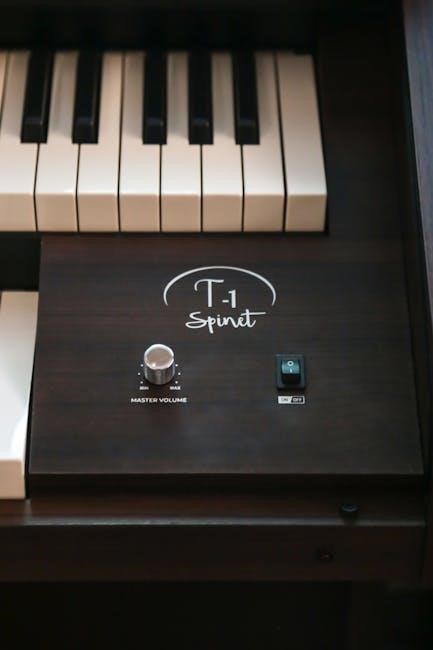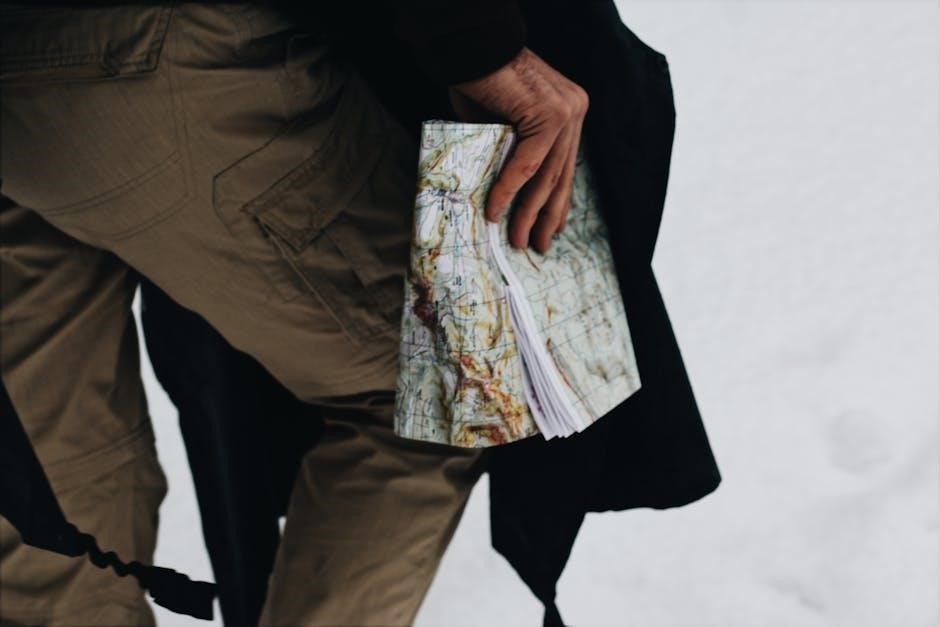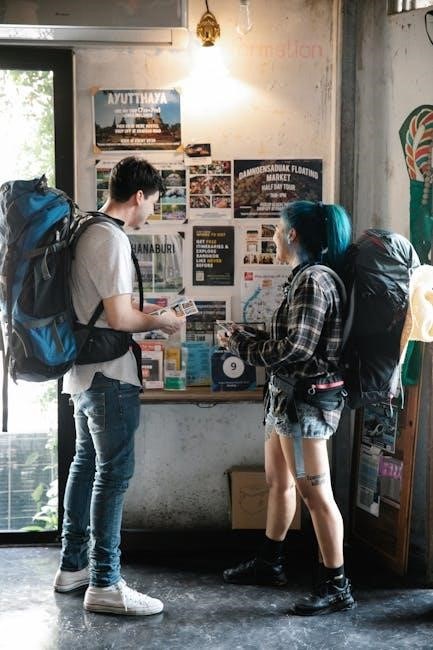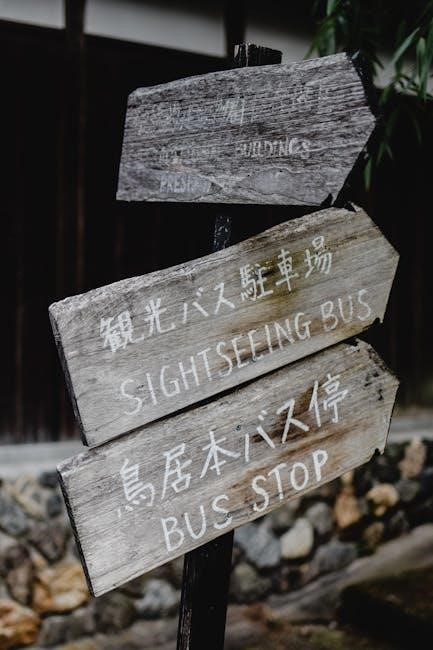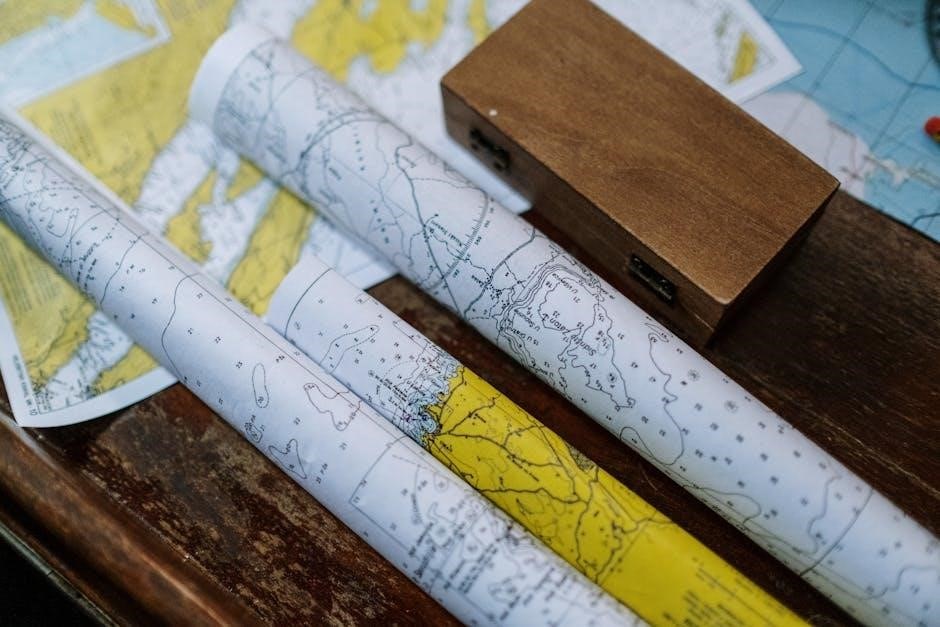An accident incident report form is a crucial document for documenting workplace incidents, ensuring compliance, and promoting safety. It provides a structured format for detailing injuries, damages, and circumstances surrounding an event, facilitating investigations and preventing future incidents while maintaining accountability.
Overview of the Importance of Accident Reporting
Accurate accident reporting is essential for ensuring workplace safety, legal compliance, and accountability. It provides a clear record of incidents, helping organizations identify root causes, implement corrective actions, and prevent future occurrences. Incident reports also support insurance claims, workers’ compensation, and regulatory requirements. They foster transparency, accountability, and a culture of safety, while protecting both employees and employers. A structured reporting process ensures consistency and thoroughness, making it a cornerstone of effective risk management and organizational responsibility.
Key Components of an Effective Incident Report Form
An effective incident report form includes essential sections such as personal details, incident description, injury or damage details, witness information, and corrective actions taken. These components ensure clarity and comprehensiveness, aiding in accurate investigations and accountability. The form should be user-friendly, with clear instructions to guide the reporter through each step. Including fields for dates, times, locations, and descriptions of events ensures that all critical information is captured. This structured approach helps organizations address incidents systematically and implement preventive measures effectively.

Structure of a Standard Accident Incident Report Form
A standard accident incident report form includes sections for personal details, incident description, injury or damage details, witness information, and corrective actions taken. These sections ensure comprehensive documentation, facilitating clear investigations and accountability while maintaining organized records for future reference and compliance purposes.
Personal Details Section
The personal details section of an accident incident report form collects essential information about individuals involved, including name, surname, occupation, section, and contact number. This section ensures proper identification and facilitates communication for follow-up actions. It may also include details of the person completing the form, such as their title, signature, and date. Clear labeling and required fields ensure accuracy and completeness, making it easier to identify who was involved and their roles in the incident. This section is crucial for accountability and record-keeping purposes.
Incident Description and Circumstances
This section provides a detailed account of the incident, including the date, time, and location where it occurred. It also outlines the work or activity being performed at the time of the incident and any equipment involved. The form requires a clear description of how the incident happened, the sequence of events, and the conditions present. Additionally, it may include information about actions taken immediately after the incident, such as first aid or emergency response measures, ensuring a thorough understanding of the circumstances surrounding the event.
Injury or Damage Details
This section documents the extent of injuries or damages resulting from the incident. It includes descriptions of physical harm, such as fractures, cuts, or sprains, and specifies the body parts affected. For property damage, details about the type and value of damaged equipment or structures are recorded. The form may also note medical treatments provided, such as first aid or hospital visits, and assess the severity of the injury or damage. This information helps in understanding the impact of the incident and determining necessary actions for recovery and prevention.
Witness Information and Statements
This section captures details of individuals who observed the incident. It includes names, roles, and contact information of witnesses, as well as their accounts of what occurred. Witness statements provide impartial perspectives, aiding in incident reconstruction and understanding contributing factors. The form may also include signature fields for witnesses to confirm their statements, ensuring credibility and accountability. This information is vital for conducting thorough investigations and implementing corrective measures to prevent future incidents. Accuracy in recording witness details is essential for maintaining the integrity of the report.

Legal and Compliance Requirements
Adhering to legal standards is essential for ensuring accurate reporting and compliance with regulatory requirements. Proper documentation helps organizations meet obligations and maintain accountability in incident management processes.
Mandatory Fields for Regulatory Compliance
Accident incident report forms must include specific mandatory fields to ensure compliance with workplace safety regulations. These typically involve detailed incident dates, times, and locations, as well as personal information of those involved. Injuries sustained and witness statements are also critical components. Additionally, descriptions of actions taken post-incident and any subsequent medical treatment are often required. These fields ensure thorough documentation, facilitating investigations and maintaining accountability while adhering to legal standards.
Workplace Safety Standards and Reporting
Adhering to workplace safety standards requires prompt and accurate reporting of incidents. Employers must ensure all accidents, injuries, or near misses are documented using standardized forms. These reports help identify hazards, implement corrective actions, and prevent future incidents. Compliance with safety regulations, such as those set by occupational health and safety authorities, is essential; Timely reporting also supports internal safety audits and continuous improvement of workplace safety protocols, fostering a safer environment for all employees and visitors.
Confidentiality and Data Protection
Maintaining confidentiality and data protection is critical when handling accident incident reports. Personal details, medical information, and witness statements must be securely stored to prevent unauthorized access. Organizations should comply with data protection laws, such as GDPR, to safeguard sensitive information. Access to the reports should be limited to authorized personnel, ensuring privacy while allowing necessary investigations and legal compliance. Secure digital systems and encrypted storage solutions are recommended to protect data integrity and confidentiality throughout the reporting process.

Best Practices for Completing the Form
Ensure accuracy by promptly reporting incidents with detailed descriptions of circumstances, injuries, and actions taken. Complete all mandatory fields and avoid errors to maintain clarity and compliance with organizational standards.
Step-by-Step Guide to Filling Out the Form
Start by recording the date, time, and location of the incident. Provide personal details of the person completing the form. Describe the incident clearly, including the activity being performed and equipment involved. Document injuries or damages sustained, noting the severity and any medical treatment provided. List witness details and their statements. Outline immediate actions taken post-incident. Review the form for accuracy and completeness before submission to ensure all mandatory fields are filled.
Importance of Accuracy and Detail
Accuracy and detail are critical in an accident incident report form to ensure proper documentation and accountability. Clear descriptions of injuries, damages, and circumstances help prevent disputes and aid in investigations. Incomplete or vague information can hinder legal processes and corrective actions. Providing precise details supports compliance with safety standards and informs preventative measures. Ensuring all sections are thoroughly completed minimizes errors and promotes a reliable record for future reference and analysis.
Timeline for Submission and Review
The accident incident report form must be submitted promptly, typically within 24 hours of the incident, to ensure timely investigations and corrective actions. Supervisors or safety specialists should review the report to verify accuracy and completeness. Following review, necessary actions, such as incident analysis or corrective measures, are implemented. Delays in submission can hinder resolution and compliance with safety regulations. A clear timeline ensures accountability and efficiency in addressing incidents effectively.

Common Types of Incidents Covered
Accident incident report forms cover workplace accidents, injuries, property damage, equipment malfunctions, medical situations, and near misses, ensuring comprehensive documentation for various incidents to promote safety and accountability.
Workplace Accidents and Injuries
Workplace accidents and injuries are unforeseen events causing harm to employees or visitors, requiring immediate attention and documentation. These incidents often involve equipment malfunctions, slips, falls, or hazardous conditions. The accident incident report form is essential for recording details such as the nature of injuries, treatment provided, and circumstances surrounding the event. Accurate reporting helps in investigations, prevents future incidents, and ensures compliance with safety regulations. It also supports workers’ compensation claims and promotes a safer work environment.
Property Damage and Equipment Malfunction

Property damage and equipment malfunction incidents involve harm to company assets or machinery, potentially disrupting operations. The accident incident report form captures details of the damage, such as the extent of the harm, cause of the malfunction, and witness accounts. This documentation aids in insurance claims, maintenance planning, and identifying preventive measures. It also ensures accountability and supports investigations to determine root causes, helping to avoid future incidents and safeguarding organizational resources effectively.
Medical Situations and Near Misses
Medical situations and near misses are critical incidents requiring detailed documentation. The accident incident report form records medical emergencies, treatments, and near-miss events where harm was narrowly avoided. This data helps identify patterns and implement safety measures. By capturing the circumstances and outcomes, organizations can improve emergency response plans and reduce future risks. Proper reporting ensures transparency, accountability, and a proactive approach to workplace safety, safeguarding both employees and assets effectively.

Tools and Resources for Creating the Form
Utilize online templates and software tools to create comprehensive accident incident report forms. Resources include PDF samples like WHS FORM 10 and digital reporting platforms for streamlined documentation.
Templates and Samples Available Online
Various online platforms offer accident incident report form templates in PDF formats, such as the WHS FORM 10. These templates provide structured layouts for documenting incidents, including sections for personal details, injury descriptions, and witness statements. Samples like the Incident Report Form (IR1) from the Health and Safety Authority are also available for reference. These resources help organizations create standardized forms, ensuring consistency and thoroughness in reporting workplace accidents or injuries.
Software for Digital Incident Reporting
Digital tools like incident reporting software streamline the process of documenting accidents and injuries. These platforms offer customizable templates, allowing organizations to tailor forms to their specific needs. Many programs enable real-time submissions, automated notifications, and secure storage of records. Advanced features include data analytics to identify trends and improve safety measures. By transitioning from paper-based to digital systems, companies can enhance efficiency, reduce errors, and ensure compliance with regulatory requirements. This modern approach supports proactive safety management and incident prevention strategies effectively.
Customization Options for Specific Needs
Organizations can tailor accident incident report forms to suit their unique requirements. Customizable templates allow modification of sections, such as adding industry-specific fields or including company branding. Users can adapt forms to capture essential details relevant to their workplace, ensuring clarity and relevance. Additionally, forms can be adjusted to align with internal policies or regulatory standards, making them more effective for incident management and compliance. This flexibility enhances the form’s utility and ensures it meets specific organizational needs efficiently.

Integrating the Form into Safety Management Systems
Accident incident report forms are integral to safety management systems, enabling systematic data collection and analysis to enhance workplace safety and compliance while fostering continuous improvement initiatives.
Linking Incident Reports to Safety Audits
Accident incident reports are essential for conducting thorough safety audits, as they provide detailed insights into workplace incidents. By analyzing data from these reports, organizations can identify recurring risks and implement corrective actions. This integration ensures that safety audits are data-driven, addressing specific hazards and improving overall safety protocols. Regular reviews of incident reports also help in assessing the effectiveness of existing safety measures and fostering a proactive approach to workplace safety, ultimately reducing future incidents and enhancing compliance with safety standards.
Using Data for Preventative Measures
Data collected from incident reports is vital for developing preventative strategies. By analyzing trends and patterns, organizations can identify root causes of accidents and implement targeted safety measures. This proactive approach reduces risks, enhances workplace safety, and minimizes potential injuries or damages. Utilizing data effectively ensures that resources are allocated efficiently, creating a safer environment for employees and improving overall operational resilience against future incidents.
Training Employees on Report Completion
Thorough training ensures employees understand the importance and process of completing incident reports accurately. Regular workshops and guidance materials help staff recognize what details to include, such as incident circumstances, injuries, and witness statements. Proper training fosters a culture of accountability and transparency, leading to more reliable data. This, in turn, supports effective incident analysis and the implementation of safety improvements, reducing future risks and enhancing workplace safety overall.

Case Studies and Real-World Applications
Real-world examples demonstrate how effective incident reporting improves safety outcomes. Industries like manufacturing and healthcare use these forms to analyze trends and implement preventative measures successfully.
Examples of Effective Incident Reporting
Effective incident reporting is demonstrated through clear documentation of workplace accidents, injuries, or near misses. For instance, a manufacturing plant used an accident incident report form to investigate a machinery malfunction, identifying root causes and implementing safety upgrades. Similarly, healthcare facilities utilize these forms to track patient falls, improving protocols and reducing future incidents. Such examples highlight how structured reporting leads to safer environments and continuous improvement in safety practices across industries.
Lessons Learned from Past Incidents
Lessons learned from past incidents highlight the importance of thorough investigations and corrective actions. For example, a workplace accident involving equipment malfunction revealed inadequate maintenance schedules. By analyzing the incident, the company implemented regular inspections and enhanced training programs, reducing future risks. Similarly, near-miss reporting has shown the value of proactive measures, such as improving visibility in high-traffic areas. These insights demonstrate how systematic review of incidents can lead to safer environments and prevent recurring issues.
Success Stories in Incident Prevention
Success stories in incident prevention often stem from effective use of accident report forms. A manufacturing company reduced workplace injuries by 30% after implementing detailed reporting and analysis. Another organization achieved a 25% decrease in incidents by using data from reports to improve safety training and equipment maintenance. These examples highlight how systematic reporting and proactive measures can significantly enhance workplace safety and foster a culture of prevention, ensuring safer environments for all employees and stakeholders.

Future Trends in Incident Reporting
Future trends include digital transformation, AI-driven analytics, and mobile reporting apps. These advancements aim to enhance efficiency, accuracy, and predictive capabilities in incident reporting, fostering safer environments.
Digital Transformation and Automation
Digital transformation is revolutionizing incident reporting through automated forms and software solutions. Online templates like the accident incident report form PDF enable quick data entry and real-time submissions. Automated systems reduce errors, streamline workflows, and ensure compliance with regulatory requirements. Mobile apps and cloud-based platforms enhance accessibility, allowing incidents to be reported instantly from any location. These tools also facilitate data analysis, generating insights to prevent future incidents and improve workplace safety standards. Automation ensures efficient incident management and faster response times.
AI and Predictive Analytics in Safety
AI and predictive analytics are transforming safety management by analyzing data from accident incident report forms. Machine learning algorithms identify patterns, predict potential risks, and recommend preventive measures. Automated systems can flag high-risk scenarios in real-time, enabling proactive interventions. Predictive models also improve incident investigation by highlighting root causes and suggesting corrective actions. This integration enhances decision-making, reduces human error, and fosters a proactive safety culture, ensuring safer workplaces and minimizing future incidents effectively.
Global Standardization of Reporting Practices
Global standardization of reporting practices ensures consistency in documenting incidents across organizations and regions. Uniform formats like the accident incident report form PDF facilitate easier comparison and analysis of incident data. Standardized fields ensure clarity and reduce errors, enabling better sharing of best practices. This harmonization supports regulatory compliance and enhances collaboration, ultimately improving workplace safety worldwide by providing a common framework for incident reporting and analysis.
The accident incident report form PDF is essential for promoting workplace safety and ensuring regulatory compliance. Accurate reporting fosters a culture of accountability and continuous improvement.
Final Thoughts on the Importance of Accurate Reporting
Accurate reporting is vital for maintaining workplace safety and legal compliance. Detailed incident reports help identify root causes, prevent future incidents, and ensure proper accountability. They also facilitate prompt medical treatment and support for affected individuals. By adhering to structured formats like the accident incident report form PDF, organizations can enhance transparency, improve safety protocols, and foster a culture of responsibility and continuous improvement.
Encouraging a Safety-Focused Culture
A safety-focused culture thrives when incident reporting is prioritized and valued. Using tools like the accident incident report form PDF, organizations can promote transparency and accountability. Encouraging employees to report incidents promptly and accurately fosters a proactive approach to safety. Regular training and recognition of safety efforts further reinforce this culture, ensuring that all stakeholders are committed to preventing accidents and maintaining a secure environment for everyone.









